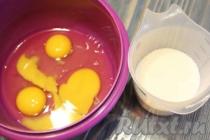The front door, not decorated with upholstery or having an old cracked surface, looks extremely sloppy, in advance forming a negative image of the homeowners among those who came. Moreover, it does not retain heat inside the apartment, and all the noise from the entrance freely penetrates into the premises. Therefore, over time, any good owner has a desire to tidy up both from the aesthetic and from the practical side.
Upholstering a door with leather with your own hands, while also solving the issues of insulation and soundproofing, is quite possible, since this event does not belong to works of a high degree of complexity, and is available to almost everyone. The main thing is to have everything necessary materials, certain tools and a good understanding of the sequence of work.
Preparing for door upholstery
1. To update the door upholstery, you will need to prepare the following materials:
- Genuine leather, of course, is a very expensive material, and is used for these purposes in exceptional cases. It does not matter, there is artificial leather (leatherette or leatherette). This material is available in a large assortment in hardware stores, and varies in color, thickness and textured pattern, so you can choose it for every taste. High-quality artificial leather both visually and tactilely differs little from natural.

The width of this material varies from 1100 to 1400 mm, and this is quite enough for the size of any door leaf. Before purchasing leatherette, you need to measure the height of the door and add 25-30 cm to the result. This length of upholstery should be bought for one side.
Also, we must not forget that the upholstery material will be needed for the manufacture of rollers, which will be fixed around the perimeter of the door leaf. For them, you will need three strips, having a width of 12-15 cm and a length that is equal to the height of the door.
- For soundproofing and insulation, sheet foam rubber, dense synthetic winterizer or felt are suitable. The required material thickness is from 10 to 25 mm.
 As a heater, you can use felt ...
As a heater, you can use felt ... This value will depend both on the type of material and on the desired volume of the pattern, if it is supposed to be done using decorative nails, thin wire or fishing line.
 ... or foam sheets
... or foam sheets - Wallpaper nails with a decorative cap. They can be made from copper, silver or gold tone alloys, or they can be covered in the same color material as the upholstery chosen.
 Wallpaper carnations - you can choose the most suitable design
Wallpaper carnations - you can choose the most suitable design The diameter of the hats or their design will depend on the design decision on the design of the door leaf.

To general view d veri looked harmonious, it is best to match the nails to the color of the door handle and lock.
- If a metal door is put in order, then one of the highly resistant polymer adhesives is purchased for this, for example, "88" or the universal "Moment".
- In addition to sheet insulation material, you will need strips of round insulation (foam rubber or polyethylene foam), sold by the footage. For our purposes, a diameter of 10, 15 or 20 mm is suitable.

2. From the tools should be prepared:
- Staples and stapler for temporary fixation of insulation and upholstery. The most convenient size of staples for door upholstery is 8÷10 mm.
- Medium-sized hammer for driving decorative nails.
- Sharp construction knife - useful for cutting insulation and upholstery.
- A screwdriver with a set of nozzles (bits) and a massive screwdriver - they are useful for dismantling the old casing, removing and then installing locks and a viewing eye.
- A nail puller and pliers are needed to pull out nails, if they will go wrong when driving in and, necessarily, to carry out the dismantling of the old coating, in the case when it was installed.
- Scissors for cutting materials.
3. The preparatory work includes the removal of the old door upholstery:
- First, all removable elements - peephole, locks and door handles.
- Next, with the help of tools, the old skin is removed as accurately as possible. It can be picked up with a powerful screwdriver, and then with pliers. Usually, if the materials are not planted on glue, leatherette and insulation are separated from the door leaf quite easily. When removing the upholstery from an old wooden door, do not use excessive force so as not to damage the canvas. Be sure to carefully inspect the entire surface to remove the remaining unnecessary nails, staples, screws, fragments of the old coating
- After cleaning the surface, the door can be removed from the hinges and laid on a prepared desktop (workbench) or four to six stools installed. Further upholstery work can be carried out in this position. If it is decided to remove the canvas from the hinges, then before this process it is necessary to mark its contour on the door frame.
- Sometimes the door is not removed, and its lining is carried out in a suspended state in its regular place.
Prices for different types of upholstery
Upholstery
How to upholster a door with leather with your own hands - various options
In order to analyze the entire technology for sheathing from all sides in detail, you need to consider three different options for work - this is upholstery on the outside of a wooden door, then on the inside, and then dwell on the features of a similar process on a metal door.
Wooden door - interior upholstery
According to long-established practice, wooden entrance doors in high-rise buildings opened into the apartment. This is the option that will be considered.
The inner lining of the door that opens into the apartment is somewhat different from the outer upholstery, and the main difference in this process is the use of additional insulation elements - rollers. They are made from upholstery strips and chopped insulation. It is convenient to use ready-made polyethylene foam rollers, which are sold by the meter, as an insulating gasket. This element of the general design serves to securely close the gaps between the door leaf and the door frame. Therefore, they are nailed in such a way that they protrude beyond the door by 10 ÷ 20 mm. It must be remembered that on the side where the hinges are located, the roller is fastened in such a way that it completely covers the gap along the entire height of the door jamb.
- The first stage of work is cutting upholstery and insulation. For the first, the exact geometric parameters of the door are taken, to which 120-150 mm are added - this will become the size that will be needed for the decorative sheathing of the canvas.
As a rule, there are always strips of scraps left - they are excellent for forming sealing beads for contour upholstery.
The insulation sheet should be 10 mm smaller on each side than the door itself.
- Along the perimeter of the door, strips of leatherette are fastened with staples with a stapler, face down. Usually, strips up to 140 mm wide are used, the length is exactly the size of the door tight. At the same time, about 40 mm of this strip is placed on the surface of the door - the rest should be outside.

Insulation tapes of polyethylene foam rubber are wrapped in these strips. Thus, rollers are formed, which are also, with a stapler, fixed on the door leaf.
Installation of rollers begins from the upper right corner of the door, then they are fixed by the vertical edges of the door, and only then - to the bottom. This takes into account the location of the door relative to the floor - the roller should not rub against the floor covering, as this will wear out and break very quickly.
If it is intended to install a consignment note, then this is taken into account when attaching the rollers - an appropriate gap is made.
- Next, insulation material is laid on the door leaf. It is fixed around the perimeter with the help of brackets, stepping back from its edge by 5-7 cm. Holes for the viewing eye and locks are immediately cut out in it.

- The next step is fixing on the surface, on top of the insulation, the upholstery material itself - artificial leather.

It wraps around the edges of the insulation and is fixed at the upper corners with staples. If the upholstery is planned with a special pattern, then its marking is carried out on the material fixed on top.

If the leather substitute must be fixed only along the perimeter, then decorative nails are hammered at the same distance from each other in 60 ÷ 80 mm. The material is stretched in the course of nailing, since after completion of work it must be perfectly even.

Learn 10 the best options doors from our new article -
Upholstery on the outside of a wooden door
The outer upholstery of the door opening inside the apartment is as follows:
- Previously, in the closed position, a rectangle of the door frame is outlined with a pencil on the door leaf - this line will show at what distance from the edge the upholstery should be installed. The remaining distance will be needed for the "quarter" selected in the door jamb.
- The next step is to fix the insulation material with a deviation from the drawn line inward by one centimeter.
- Then the main skin material is nailed to the door along the outlined line with bend its edge in inside, similar to internal installation, but the bottom edge of the material is left free for now.
 A characteristic feature is that the sealing rollers are not attached to the door leaf, but to the frame
A characteristic feature is that the sealing rollers are not attached to the door leaf, but to the frame - From the outside, the insulating roller is installed on three sides not on the door, but on the racks and the crossbar of the door jamb, except for the bottom side. Nailing such a roller to the threshold is absolutely pointless, since it will not perform its functions, moreover, it will quickly come off or be erased from constant contact with the shoes of people passing through the door.
A strip of leatherette is fixed with the front side to the jamb with a stapler, a strip of insulation is installed in it, the second side of the material is tucked inward, forming a roller, and nailed with decorative nails. The roller should be on the door when it is closed by 15 - 20 mm, but you need to make sure that it does not fall on the keyhole.
- The lower insulation roller cannot be too voluminous, it is attached to the door leaf itself and must fit snugly against the threshold.
- Further, the main fabric of the upholstery is stretched onto the lower roller and nailed.
- The last step, after upholstering both sides, all door panels are installed. accessories - peephole, handles and locks. It is very important to carefully make small cuts on the skin. The main thing is not to cut the material more than is required, otherwise the door will immediately lose its respectable appearance.
Video: Wooden front door upholstery option
Entrance door prices
Entrance doors
Features of working on a metal door
It is usually installed as an external one, always opening outwards. It will also be nice to insulate it from the inside and transform it on both sides.

Outer side
Transforming and insulating a metal door, do not use insulating rollers around the perimeter. This door has a completely different purpose - it is used as the main protection of the entrance to the home and ill-wishers, and only then - as an additional protection against the cold.
Installation of upholstery and insulation on metal from the outside is carried out with glue. The insulation in this case is cut out 10 ÷ 15 mm smaller than the door leaf, both in length and width. The upholstery material should exceed its size by 50-60 mm - this part of the material will go to the bend around the metal shelves of the door leaf.
- On the metal surface, stepping back from the edge of 10 ÷ 15 mm, and in several places in the middle of the plane, glue is applied in strips.
- Then a heater is laid on it and is well pressed against the door leaf. It is necessary to give time to the glue under the heater to dry. The specific period will be indicated in the instructions for use of a particular composition.
- Next, you can start gluing the leatherette. Glue is applied to the back of the metal plate from the top of the door, at a distance of 50 mm. He needs to give a few minutes to grasp.

- Then, noting the middle of the width of the door and the sheathing material, it must be applied to the glued place according to the marks and carefully pressed, and then give some time for a good grip.
- The next step is to glue the side parts of the door in the same way - the sheathing material is bent and glued onto the shelves. If an excess of leatherette has formed during pulling, even a few millimeters, it must be cut off with a sharp knife, otherwise it will interfere with closing the door. If the sheathing material is dense enough, then you may have to cut off the corners so that the close-fitting is as accurate as possible.
Inner side
If the inner side of the metal door is not insulated, then you should think about this event. Usually, on the reverse side, a metal door looks like a frame welded from corners and a profile pipe, onto which a metal sheet is welded, acting as a door leaf. It's already wrapped in faux leather.
Now you need to insulate and finish the inside of the door.
- In this case, polystyrene foam, which has the thickness of the door frame, is perfect for insulation.
- You will also need wooden slats of the same thickness.
- To seal the joints and seams, mounting foam is required.
- It is necessary to prepare a drill with a drill for metal screws.
- For interior decoration, thin plywood, soft insulation and leatherette can be used.
- The first step is to fix the wooden planks to the frame. To do this, holes are drilled in the corners or a profile pipe and the strips are fixed to them with self-tapping screws. Reiki are necessary so that it is convenient to attach plywood or other inner lining to them.

- To remove the "cold bridges", between the possible gaps between the metal and the rails are filled with mounting foam. By the way, it will give additional rigidity to the fastening of the rails, as it also has pronounced adhesive properties.

- After the slats are screwed and treated with foam, polystyrene foam panels are installed between them. The gaps between them and the rails are also carefully filled with mounting foam.

- While the foam is drying, you can start preparing the plywood sheet. Its thickness must be chosen in such a way that the door is easily pressed against the jamb, especially since insulation and sheathing will still be installed on it.
- The plywood blank should have the size of the inside of the door, insulated with foam, plus the width of the frame along the upper and lower sides of the perimeter of the door leaf.
- A thin insulation is glued over the entire area of \u200b\u200bplywood.
- Further, the plane is completely tightened with leatherette, with its bend to the inside. The material is fixed with glue and additionally fixed in several places with brackets.
- When the panel is completely ready, the location of the wooden slats screwed to the metal frame is marked on it. This process must be done very carefully so that barely noticeable points remain on the skin, along which decorative nails will be hammered.
- It is possible that you will have to make another hole in the corners and fix the corners of the plywood sheathing with self-tapping screws to ensure that this lining fits snugly against the metal frame.
Video: Upholstery of a metal door with its insulation
It should be noted that, if desired, the plywood lining can be replaced with an ordinary clapboard made of natural wood or laminated fiberboard. It, starting from the bottom, is attached to the same installed rails.

Upholstering the door with leather or is not difficult at all. By doing this work yourself, the landlord can save quite a large amount. The purchase of a ready-made kit, which includes a set of materials designed to decorate a standard door, will facilitate the calculations and the upholstery process.

Video - How to upholster a door with leatherette
Actually it all started with the fact that the stove tap broke — it began to leak, and all the antifreeze dripped right under the feet of the front passenger. Repair was needed. What to do? Thoughts were: dismantle the interior, throw out the old, soaked Shumkov, put something new, and throw out the tap. What to put in new? How about soundproofing? This thought flew in my head for about six months. Finally made up my mind, bought the material in the spring and started. When I dismantled the interior — everything was dry !!! Only the carpet was slightly soaked with antifreeze. In general, the process of soundproofing is a separate issue. In the process of studying the issue of soundproofing, I read all sorts of articles about the installation of acoustics and, in particular, the manufacture of podiums on the front doors. It has already become an obsession. In a dream, I dreamed of various forms, no, not female, but forms of catwalks, female sniffles at my side. And yet he decided, especially after two friends told about their work.
And so the shape of the podium. Either it’s simple and not beautiful - it’s a round bulge for a speaker, or the podium should be a continuation of the pocket.
I drew on a piece of paper, cut it out, attached it - something is missing, an unfinished look. He introduced himself as a car interior designer and decided to radically redo the door trim, so that, like in foreign cars, it was leather, and even with folds. Drawn, cut, attached.
It seems to look okay. Let's get started.
What do we need? The skin of a young leatherette, which necessarily stretches well, the fabric is beautiful - I chose blue fluffy to match the color of the car, soft material such as foam, glue, Macroflex (or any similar material), patience. If we can buy something later.
Since the shape of the door panel is slightly rounded at the top, the old panel does not fit, you need to cut out a new base - from hardboard. And you will still need to file the plastic lining. As a soft material for fabric and leatherette, I took isolon, which was left over from soundproofing. One large piece was cut out along the entire contour of the panel and two pieces in the form of decorative overlays. I decided to simply sew these overlays to the fabric base, placing isolon. In what sequence of what and how to attach, do not ask, I can’t explain on my fingers, but I didn’t take pictures of this process. The stitched sheathing with a thin layer of glue, so that it does not soak the fabric through, is glued on top of the isolon, the isolon is already glued to the hardboard. After a lot of tinkering, this is what I came up with:
I wrapped and glued the edges of the fabric, and then went through it with a stapler for reliability.
The base is ready, now you need to glue the podium itself and the top lining.
Since there will be two podiums with pockets, and only one goes as standard, I began to look for a second pocket for the second door. But I didn’t find my own, but I found pockets from 41 Muscovites. You don't even need to cut them, just screw them on and that's it.
The frame of the podium was cut out of 10mm plywood. For about
made a lot of holes for relief. According to the correct one, the installation angles of the speakers need to be selected long and hard, experimentally. But I was not going to make a prize installation, and I intended to "steer" the scene in the future with the help of tweeters, which is quite acceptable. Therefore, the shape and angle of inclination were chosen by eye.
The frame was fastened with PVA and, to be sure, with screws. Now it remains to fill the frame with foam. By itself, the hardened foam is soft and easily crushed, so I used the wet foam technology - when applying the foam, I dripped a little water into it and mixed it with a spatula and stuffed it in places with my fingers. The latter should be done only in latex gloves, the foam is very poorly rubbed off, especially frozen - only together with the skin.
With this foam technology, it took two large cylinders - one liter, and that might not be enough. The frozen foam, especially where it turned out to be loose, is easily cut, and where it is very dense, it is difficult. Therefore, I turned it with a coarse file.
After processing, voids appeared in the foam. You have to spat. AND
I used fiberglass putty. Since it dries quickly, it is necessary to putty in small portions. It took one 250g jar of two-component putty.
Since it didn’t work out perfectly to putty, and it wasn’t necessary, more putty was not needed, but it was possible to continue. To make the surface of the podium at least a little soft, I glued everything with a cloth from a coat. It perfectly stretches and repeats the shape of the podium, while hiding the shortcomings of puttying.


So let's go:
Many owners of the classics know (or maybe they don’t know) that the inner door skins over time have such a property as to go in waves and not fit snugly against the door. Blame the frame of these very skins. It consists of hardboard (or something like that) and when exposed to moisture inside the door (and there is always plenty of it), the hardboard begins to collapse. In severely neglected cases, it comes to the point that the holes for the mounting clips simply crumble and it becomes problematic to fix the trim on the door.
What to do? At first I got out of this situation by pasting the clips with masking tape.
But this is a clear half-measure and the replacement of the skin is still necessary.
Let's start with the choice of material:
Now plastic frames are very popular at dismantling, but plastic has such a property as rattling and, most importantly, bursting.
The next candidate is hardboard. But o5 hardboard (cheap) is very afraid of moisture and is quite soft initially.
And the last one is: plywood. Most best option(in my opinion). Of course, plywood is also afraid of water, but with proper processing, nothing bad will happen to it, and the main thing is that it is quite rigid and the risk of tearing out the clip “with meat” is much less when removing it.
Plywood 4 mm thick was chosen for the blank:

Now cut out the frame itself: As a template, the easiest way is to take the old skin and simply circle the contours with a pencil. And then a drill and a jigsaw ...




Quite a painstaking process, the main thing is not to cut too much! After cutting, it is advisable to smooth the edges with a file and sand all the plywood with 120 sandpaper.
Important! The plywood itself is thicker than the old hardboard, and in order for the clips to be fixed firmly and not fly out of the seats, it is necessary to drill small grooves near the attachment points:

Next up is moisture protection. There are a lot of options here! The best would probably be the impregnation of plywood with drying oil. But this process is time-consuming and, in my opinion, redundant. The most optimal treatment will be impregnating soil:

It is important to pay special attention to the edges. 2-4 layers with interlayer drying 3-8 hours… The frame is ready!
Directly hauling: If you are going to drag the old upholstery, then initially you need to tear it off from the old frame. You need to do this carefully, she keeps soundly! It is advisable to pry with your hand and tear it off along a large plane without jerking sharply.

To give a presentable appearance, we carry out water procedures:

Then we glue with double-sided tape all the places where the upholstery was attached to the old frame, remove the film and press the plywood immediately over the entire plane. I highly recommend using glue! It sticks poorly, and the fabric can be ruined very badly.
If successful, you should get something like:

And at the end we tighten the edges:




The process is not very complicated, the main thing is to nail the fabric into a stretch and make sure that wrinkles do not form on the front side.

That's all! By the time the work took 2 days in the garage in the evenings. According to finances, about 350 rubles for plywood and 200 rubles for soil. Thank you all for your attention!
In fact, it all started with the fact that the stove tap broke - it began to leak, and the whole antifreeze dripped open under the feet of the front passenger. Repair was needed. What to build? The ideas were sort of: to dismantle the interior, throw out the old, soaked Shumkov, put something new, and throw out the tap. What to put in new? Are you able to soundproof? This thought flew into the bowler hat for about six months. In the end, I dared, well, almost at the end of the winter of 2003, I bought the substance and started. Sometimes I dismantled the salon - everything was soulless !!! Only the carpet was slightly soaked with antifreeze. In the corporate soundproofing process, this is a separate subject. In the process of researching the issue of soundproofing, I read all sorts of articles on the pretext of the design of acoustics and, in particular, the production of podiums for the front doors. It has become more of an obsession. In a dream, I dreamed of different forms, no, not women's, but forms of catwalks, ladies' sniffles at my side. And yet he dared, inimitably after the two companions told about close studies.
And so the shape of the podium. Either it is easy and not plausible - this is the unevenness of the perfect shape for the speaker, or the podium must be a continuation of the pocket.
I drew it on a piece of paper, cut it out, attached it - something is missing, not a finished look. He introduced himself as a car interior designer and decided to radically rework the door trim, so that, like in foreign cars, a skin, and even with folds. Drawn, cut, attached.

It seems to look okay. Let's get started.
What do we need? The skin of a young dermantin, without fail, one or the other stretches well, the fabric is beautiful - I preferred blue shaggy to match the color of the typewriter, a soft substance like paralon, glue, Macroflex (or any similar substance), patience. If we buy something later.
Since the shape of the door panel is slightly rounded at the top, the old panel does not fit, it is necessary to cut out a new base - from hardboard. And you will also need to file the plastic lining. As a soft substance under the fabric and dermantin, the isolon, which remained from the soundproofing, was arrested. One large piece was cut out along the whole outline of the panel and two pieces according to the shape of the decorative overlays. I decided to easily sew these overlays to the fabric base by placing isolon. In what sequence of what and how to attach, don’t ask, I won’t be able to explain on my fingers, but I didn’t take pictures of this process. The stitched sheathing with a narrow shell of glue, so that it does not soak through the fabric, is glued over the isolon, the isolon is more closely glued to the hardboard. After a long torment, this is what happened:


He wrapped and glued the edges of the fabric, and later walked with a stapler for reliability.
The base is ready, now it is necessary to glue the podium itself and the top plate.
Since there will be two podiums with pockets, and only one podia should follow, I began to look for the second pocket for the second door. But he did not find his native, but he found pockets from 41 Muscovites. You don't even need to cut them off, you can easily screw them on and that's it.
The base of the podium was cut out of plywood 10mm wide. To make it easier, I made as many holes as possible. According to the correct, the corners of the speaker design must be chosen long and stubbornly, by experimental method. But I was not going to build a prize unit, but I intended to "steer" the stage in the future with the help of tweeters, which is completely possible. Therefore, the shape and angle of inclination were chosen by eye.


The base was fastened with PVA and, to be sure, with screws. Now it remains to fill the base with foam. By itself, the hardened foam is soft and easily folds, therefore I used the technology of wet foam - when applying the foam, I dripped a little water into it and stirred it with a spatula and stuffed it over the areas with my fingers. Finally, it is necessary to build only in latex gloves, the foam is extremely unsatisfactorily rubbed off, inimitably frozen - only together with the skin.

With a sort of foam technology, two huge cylinders left - a liter each, and that could not be enough. The frozen foam, inimitably loose where it came out, is freely cut, and where it is extremely compacted - with a product. Therefore, he turned it with a rough file.

After processing, the contentlessness in the foam appeared. You need to spat. Used putty with fiberglass. Since she vividly loves, it is necessary to putty in small doses. This left one 250g jar of two-component putty.

Since it didn’t work out exemplary to putty, well, it wasn’t necessary that most putty was not useful, but it was possible to continue. To make the surface of the podium at least a little bit soft, I glued everything with a cloth from a coat. It stretches superbly and will repeat the shape of the podium, while hiding the shortcomings of puttying.

This intermediate result easily amused me. But below was the most difficult thing - to sheathe the podium with dermantine. At first, I cut out a pattern from a rag, later transferred it to dermantin and began to baste. Here I didn’t break a bit and didn’t send this whole idea to X ... Therefore, there is only one photo of this process.

In the end, with my mother's help and support, I sewed it and it remained to put the earned money on the podium. Leatherette freely stretches obliquely and across a close fabric base - this must be taken into account. I glued the edges of the dermantine and nailed it with a stapler.
In a new car, at first everything is so, however, during operation, the colors of the upholstery material begin to lose their brightness, rub off and become covered with stains that can no longer be cleaned. This problem is especially acute for light-colored interiors, when, after several years of operation, do-it-yourself upholstery of the car interior is simply necessary.
Of course, you can solve the issue by contacting a service where professionals will completely change the upholstery of the seats and the interior, but many can do the upholstery of the car’s interior with their own hands, so you will save a significant amount of money and be able to give the car elegance to your personal taste.
Step 1: choose the material
Everyone agrees that leather upholstery is the perfect solution for any vehicle However, this pleasure is not affordable for everyone, because it is not cheap.
However, today there are other upholstery materials that have earned popularity among car owners for their qualities:
- Carpet is the cheapest and most easily accessible of materials; a decorative pile coating is usually applied on top of its non-woven base. Its main advantage is a completely simple installation process and a huge selection of colors.
- Alcantara - has a basis of fine-fiber threads, the material is made using the technologies of the chemical and textile industries. Alcantara is a material with good characteristics of strength and durability, it is distinguished by softness, a silky surface and a dirt-resistant coating.
- Leatherette is a cheap and attractive material, which, unfortunately, has an impressive list of drawbacks. Its main disadvantages include an unpleasant odor that lingers in the cabin for a long time, increased elasticity characteristics, low resistance to mechanical impacts, as well as the ability to absorb odors, sometimes quite unpleasant.
When purchasing material for a future do-it-yourself upholstery of a car interior, be sure to look at the quality of the goods you want to sell, you should check the uniformity of the structures of any material. If you decide to opt for Alcantara, remember that the direction of the fibers can be crucial when cutting, otherwise it will turn out that on the same seat all the details will differ in shades.
Step 2: Prepare the Tools

Since the process of car upholstery with any material, be it leatherette, carpet, velor or leather, is performed according to a certain algorithm, it requires tools, sometimes they even need to be bought specially. So, you will need: a sewing machine (you need it if you plan to replace the seat trim), soundproofing materials (at your request), a set of keys. And also a couple of tubes of glue, a hair dryer, a set of screwdrivers, scissors for working with linoleum.
Step 3: Getting Started
It must be remembered that depending on the model of the car, the sequence for replacing the interior upholstery may vary slightly. However, in general terms, it is the same for all:
- First, all fasteners and all fittings, such as visors, handles and decorative elements, are removed.
- In the car, the electrical wiring is disconnected, the connectors are removed, the decorating elements are unfastened and the old upholstery is removed.
- When dismantling is completed, the surfaces are cleaned of all contaminants
- All parts made of metal and plastic are degreased
- The future upholstery is being cut, for which the previous parts are applied to a sheet of cardboard, then it should be cut. It is advisable to transfer finished cardboard patterns to the prepared material only when you check that you have done everything correctly.
- When the details of the new upholstery are ready, they should be installed on the surface, having previously thoroughly smeared them with a layer of glue
- If necessary, you can use a hair dryer to smooth out the formed folds. In addition to steaming, you can beat off the upholstery seams with little force, then everything will look even more neat and beautiful.
- And in conclusion, all fasteners removed at the beginning of work should be installed in their places.
Do-it-yourself car interior trim: some useful tips for each part of the cabin
First, let's watch the video:
seats
If you are planning to completely replace the upholstery on the seats, and not purchase new covers, then first you need to cut the old upholstery at the seams, you will make a pattern along it. After the individual elements are ready, using a sewing machine, you should assemble them into a single product. Nowadays it is much easier to go and buy new covers, in auto shops there is a huge selection of various options for this product.

doors
Removing dirt is especially important when changing upholstery with your own hands on car doors. When you start your pattern, remember to leave about a centimeter of allowances on all sides of the part. Be careful when making the holes needed for the door handle and power window handle. In places where the upholstery is close to the door, be sure to apply a layer of glue.
Do-it-yourself car interior upholstery: ceiling
To replace the ceiling banner, an important fact is the complete dismantling of all backlights, plugs, handles and decorative parts of the racks. Only the fulfillment of this condition will allow you to change the ceiling lining as carefully as possible. By the way, if you chose leatherette for the ceiling, it is recommended to heat it up a little before starting installation, then it will be elastic, which means that it will be easy and simple to fix it.
armrests
To tighten the armrests, they must first be removed, then patterns should be made using the previous details, be sure to leave small reserves of material around the edges. After that, the product is glued over the entire area, the edges are carefully fixed, and processed with a hair dryer.
And finally
In cases where there is a need or just a desire, before the final installation of a new upholstery, foam rubber or special insulating material is laid under the parts.

As it becomes clear from the foregoing, do-it-yourself upholstery of a car interior is a very real task. Of course, it requires an investment of a certain amount of money and several hours of time, but the result is worth it, because then you will be proud of the fact that with your own hands, without the help of professionals, you changed the entire upholstery in the car.














